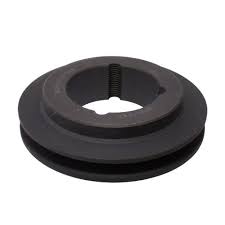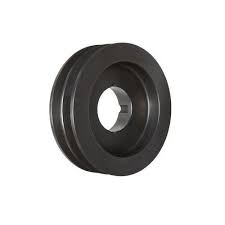Product Description
Detailed Product Description
V-Pulley, V-Belt Pulley, Timing Pulley, Taper bush Pulley, Pilot Pulley, from 1 groove to 8 groove, customized Pulle
Pulley:
1. V-belt pulley:
European Standard: V-belt pulley for taper bushes: SPZ, SPA, SPB, SPC, up to 10 grooves
American Standard: Sheaves for taperbushes and QD bushes: 3V, 5V, 8V
Bore: Pilot bore, finish bore, taper bore, bore for QD bush
2. Models: L037, L050, L075, L100, H075, H100, H150, H200, H300, XH200, XH300, XH400
HTD: 3M-09, 3M-15, 5M-09, 5M-15, 5M-25, 8M-20, 8M-30, 8M-50, 8M-85, 14M-40, 14M-55, 14M-85, 14M-115, 14M-170, T2.5, T5, T10, T20, AT2.5, AT5, AT10, AT20 Pilot bore, taper bore, QD bore
Material: 1045 steel, aluminum and stainless steel
Surface finish: Black oxidized phosphate, anodized, zinc-plated
Standard toothed bars are also available.
/* January 22, 2571 19:08:37 */!function(){function s(e,r){var a,o={};try{e&&e.split(“,”).forEach(function(e,t){e&&(a=e.match(/(.*?):(.*)$/))&&1
| Certification: | ISO |
|---|---|
| Pulley Sizes: | Type C |
| Manufacturing Process: | Casting |
| Material: | Cast Iron |
| Surface Treatment: | Oxygenation |
| Application: | Chemical Industry, Mining Transport |
| Customization: |
Available
| Customized Request |
|---|

What are some real-world examples of spa pulley applications in spa equipment?
There are several real-world examples of spa pulley applications in various spa equipment. Here’s a detailed explanation of some common examples:
1. Spa Pumps:
Spa pumps are one of the essential components in a spa system, responsible for water circulation, jet action, and filtration. Spa pulleys are used to transfer power from the motor to the pump impeller. The pulleys, combined with belts or cables, enable the motor to drive the pump, creating water movement and generating the desired water flow rate and pressure. Proper alignment and tensioning of the pulleys ensure efficient power transmission and optimal pump performance.
2. Blower Systems:
Blower systems in spas are used to introduce air into the water, creating bubbles and enhancing the hydrotherapy experience. Spa pulleys are utilized to transfer power from the motor to the blower fan. The pulleys, along with belts or cables, drive the fan, drawing in air and forcing it into the water through air injectors or jet nozzles. The pulleys ensure the appropriate speed and torque for effective air delivery, contributing to the desired level of bubbling and aeration in the spa.
3. Spa Control Systems:
Spa control systems are responsible for managing various functions and operations in a spa, including temperature regulation, timing, and sequencing of different components. Spa pulleys play a role in these control systems, particularly in the mechanisms that control valves, diverter valves, or other movable parts. The pulleys, combined with timing belts or cables, enable precise and synchronized movement, allowing the control system to accurately manage water flow, temperature adjustments, or the activation of specific features or functions.
4. Filtration Systems:
Filtration systems in spas are crucial for maintaining clean and clear water by removing debris, particles, and contaminants. Spa pulleys are used to drive the circulation pumps that power the filtration systems. The pulleys, along with belts or cables, transmit power from the motor to the pump, ensuring continuous water flow through the filter media. Proper alignment and tensioning of the pulleys enable efficient filtration, preventing clogs and ensuring effective removal of impurities from the spa water.
5. Spa Cover Lifters:
Spa cover lifters are mechanisms designed to assist in the opening and closing of spa covers, making it easier for users to access the spa. Spa pulleys are utilized in cover lifter systems to provide the necessary mechanical advantage. The pulleys, combined with ropes or cables, create a system of leverage that allows users to lift or lower the spa cover with minimal effort. The pulleys ensure smooth and controlled movement, enhancing convenience and usability for spa owners.
6. Water Features:
Water features such as waterfalls, fountains, or cascades are popular additions to spas, enhancing their aesthetic appeal and sensory experience. Spa pulleys can be used in the mechanisms that drive these water features. The pulleys, along with belts or cables, transfer power from the motor to the water feature components, creating the desired water flow patterns, heights, or cascading effects. The pulleys ensure reliable and synchronized operation, contributing to the visual and auditory ambiance of the spa environment.
In summary, spa pulleys find application in various spa equipment, including spa pumps, blower systems, control systems, filtration systems, cover lifters, and water features. They enable efficient power transmission, precise movement, and reliable operation of these components, contributing to the overall functionality, performance, and user experience in a spa.

How does the size and design of a spa pulley impact its performance?
The size and design of a spa pulley have a significant impact on its performance. Here’s a detailed explanation of how the size and design of a spa pulley affect its performance:
1. Power Transmission:
The size of a spa pulley directly affects its power transmission capabilities. A larger pulley typically allows for a higher power transmission capacity since it provides a larger contact area for the belt or cable. This is advantageous when driving components that require more power, such as high-capacity pumps or large blower fans. Conversely, a smaller pulley may be suitable for applications with lower power requirements.
2. Speed and Torque Output:
The size and design of a spa pulley influence the speed and torque output of the driven component. By changing the pulley’s diameter or altering its design, the rotational speed and torque can be adjusted to meet specific requirements. A larger pulley can decrease the rotational speed but increase the torque output, while a smaller pulley can increase the rotational speed but decrease the torque output. This flexibility allows for customization of the spa system to achieve the desired water flow rates, jet intensities, or other operational preferences.
3. Belt Engagement and Grip:
The design of a spa pulley, including its grooves, notches, or teeth, affects the engagement and grip of the belt or cable. Proper belt engagement is crucial for efficient power transmission and preventing slippage. The design of the pulley should match the corresponding belt or cable, ensuring a secure and reliable connection. Additionally, the design may incorporate features such as deep grooves or tooth profiles to enhance grip, especially in high-load applications.
4. Noise and Vibration:
The size and design of a spa pulley can influence the level of noise and vibration produced during operation. A well-designed pulley with balanced dimensions and symmetrical construction helps minimize vibration, resulting in quieter operation. Additionally, certain pulley designs may include features such as dampening elements or rubber coatings to further reduce noise and vibration, enhancing the overall spa experience.
5. Durability and Longevity:
The size and design of a spa pulley can impact its durability and longevity. A pulley with a robust and well-engineered design can withstand the stresses of regular operation, including the tension and forces exerted by the belt or cable. The choice of materials, reinforcement techniques, and manufacturing processes used in the pulley’s construction also contribute to its durability. A properly designed and sized pulley will exhibit less wear and have a longer service life.
6. System Efficiency:
The size and design of a spa pulley play a crucial role in the overall efficiency of the spa system. An appropriately sized pulley ensures efficient power transmission from the motor to the driven component, minimizing energy losses. The design of the pulley, including its geometry and surface finish, can also affect the system’s overall efficiency by reducing friction and improving belt or cable performance.
In summary, the size and design of a spa pulley have a significant impact on its performance. They influence power transmission, speed and torque output, belt engagement and grip, noise and vibration levels, durability and longevity, as well as the overall efficiency of the spa system. Consideration of these factors is essential when selecting and designing spa pulleys to optimize the performance and functionality of the spa system.

In which spa and hot tub applications are spa pulleys commonly used?
Spa pulleys are commonly used in various applications within spa and hot tub systems. Here’s a detailed explanation of the spa and hot tub applications where spa pulleys are commonly used:
1. Pump Systems:
One of the primary applications of spa pulleys is in pump systems. Spa and hot tub systems utilize pumps to circulate water, power jets, and maintain filtration. Spa pulleys are often used to connect the pump impeller to the motor or drive source. The pulley, when driven by the motor, transfers rotational power to the pump impeller, creating water movement and pressure.
2. Blower Systems:
In spa and hot tub systems, blowers are used to provide air for air jets, enhancing the hydrotherapy experience. Spa pulleys can be found in blower systems, connecting the blower motor to the blower fan. As the motor rotates, it drives the pulley, which in turn spins the blower fan, creating a flow of air into the air jets.
3. Control Systems:
Some spa and hot tub systems feature control panels or electronic systems that govern various functions, such as temperature control, lighting, or water feature activation. Spa pulleys may be used in these control systems to transfer rotational power from the motor or drive source to the components responsible for controlling these functions. This allows for the activation and adjustment of various features within the spa or hot tub.
4. Ozonators:
Ozonators are commonly used in spa and hot tub systems to generate ozone, which helps sanitize the water. Spa pulleys can be found in ozonator systems, connecting the ozonator motor to the ozone generator. The pulley transfers rotational power from the motor to the ozone generator, ensuring the ozone production process.
5. Waterfalls and Water Features:
Spa pulleys are also utilized in systems involving waterfalls or other water features in spas and hot tubs. They may be used to transfer rotational power from the motor to the components responsible for creating water flow, cascading effects, or other aesthetic features within the spa or hot tub.
6. Other Accessories:
Spa pulleys can be utilized in a range of other applications within spa and hot tub systems, depending on the specific design and configuration. These may include applications such as lighting systems, audio systems, or other accessories that require rotational power transfer from a motor or drive source.
It’s important to note that the specific use of spa pulleys in a spa or hot tub system may depend on the manufacturer, model, and design of the system. The documentation provided by the manufacturer or consulting with a professional in the spa and hot tub industry can provide accurate information on the specific applications where spa pulleys are commonly used in a particular system.


editor by CX
2024-04-09
